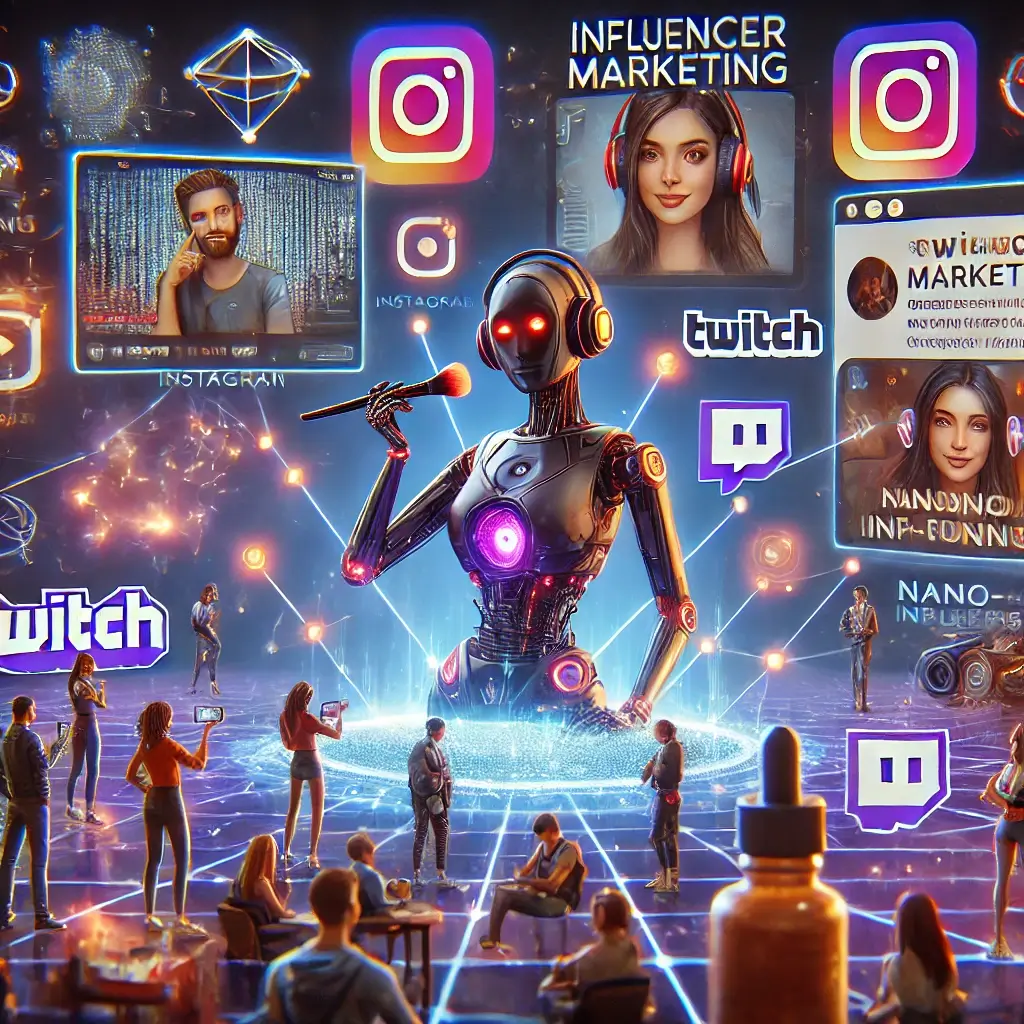Beyond Instagram: How Emerging Platforms and Nano-Influencers Are Reshaping Marketing ROI
The Strategic Powerhouse Reshaping Brand Relationships
Influencer marketing is no longer just a buzzword—it’s a strategic powerhouse shaping the future of brand-consumer relationships. As the digital landscape becomes increasingly saturated, traditional advertising methods are losing their impact. Consumers now value trust, authenticity, and relevance more than ever, making influencers pivotal in bridging the gap between brands and audiences. By 2025, this thriving industry is expected to exceed $24 billion globally, reflecting its indispensability in modern marketing.
Data-Driven Approaches for Evolving Consumer Expectations
But success in influencer marketing isn’t automatic. In an era dominated by data and AI-driven insights, marketers must craft smarter, more adaptive campaigns to meet evolving consumer expectations. The days of one-size-fits-all approaches are long gone. Today, brands need to build meaningful connections with their audiences by aligning with influencers who genuinely reflect their values.
Unlocking Your Brand’s Full Potential in 2025
This article offers a fresh take on influencer marketing for 2025, spotlighting innovative strategies and cutting-edge tools that can help brands unlock their full potential. From capitalizing on the micro-influencer boom to leveraging emerging platforms, these insights are designed to position your campaigns for success in the years ahead.
Key Trends and Strategies for 2025
1. Tapping into the Power of Nano-Influencers
While micro-influencers have dominated the conversation, nano-influencers (with fewer than 10,000 followers) are gaining traction due to their hyper-localized influence and deeply engaged audiences. These creators often foster genuine connections, making their recommendations highly persuasive.
Case Study: A local coffee shop collaborated with 15 nano-influencers who actively shared their experiences on Instagram. The campaign boosted foot traffic by 30% and tripled user-generated content under the brand’s hashtag within three weeks.
Exploring Untapped Platforms for Authentic Connections
2. Diversifying Platforms Beyond Instagram and TikTok
Emerging platforms like Twitch, Discord, and BeReal are redefining how brands engage with audiences. These spaces, often overlooked, provide untapped opportunities to connect with niche communities in an authentic, less commercialized environment.
Example: A gaming accessories company launched a partnership with Twitch streamers to promote their latest products. By integrating brand mentions into live gameplay, the campaign achieved a 50% increase in click-through rates compared to static ads.
Leveraging AI for Real-Time Campaign Optimization
3. AI-Powered Campaign Optimization
AI isn’t just for selecting influencers; it’s revolutionizing campaign management. From identifying optimal posting times to predicting audience responses, AI tools enable marketers to fine-tune their strategies in real-time.
Example: A fitness apparel brand used AI to analyze social media trends and determine the best time for influencer posts. This data-driven approach boosted engagement rates by 35%.
Creating Immersive Brand Experiences Through AR Technology
4. Incorporating Augmented Reality (AR) for Immersive Experiences
AR technology is transforming how brands showcase products. Partnering with influencers to create interactive AR content—such as virtual try-ons or immersive product demos—can elevate audience engagement and drive conversions.
Case Study: A beauty brand collaborated with influencers to create AR filters that allowed users to try on makeup virtually. The campaign resulted in a 40% increase in product trials and a 25% uptick in sales.
Moving Beyond Vanity Metrics with Advanced Analytics
5. Measuring Impact with Enhanced Analytics
Advanced analytics tools are empowering brands to move beyond surface metrics like likes and shares. By focusing on tangible outcomes such as sales, customer retention, and brand sentiment, marketers can justify their influencer budgets with precision.
Example: A travel agency utilized attribution models to link influencer content directly to bookings. The insights helped refine their strategy, increasing campaign ROI by 45%.
Balancing Innovation with Authenticity for Maximum Impact
Conclusion
Influencer marketing in 2025 is about more than just visibility—it’s about creating memorable, impactful experiences that resonate with audiences on a deeper level. By exploring untapped platforms, leveraging AI and AR, and embracing nano-influencers, brands can stay ahead of the curve. Success lies in balancing innovation with authenticity, ensuring every campaign not only meets but exceeds consumer expectations.
Industry Resources and Further Reading
References
Influencer Marketing Hub. “The Rise of Nano-Influencers in 2024.” Published 2024. Link
Twitch Blog. “How Brands Are Leveraging Live Streaming for Marketing.” Published 2024. Link
Forbes. “AI and the Future of Marketing Optimization.” Published 2023. Link
Augmented Reality News. “AR in Influencer Marketing: A Game-Changer for 2025.” Published 2024. Link
Sprout Social. “Advanced Analytics for Social Media Campaigns.” Published 2023. Link
